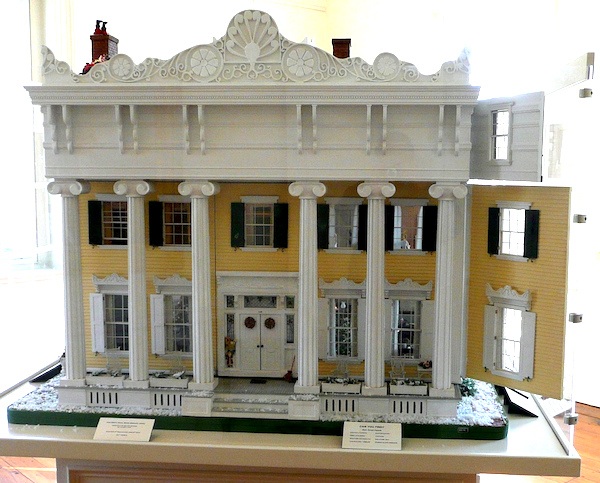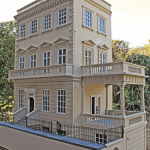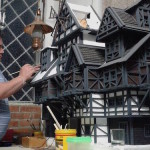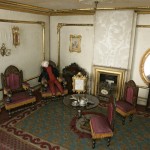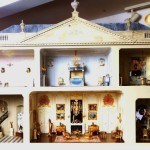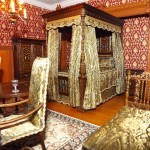Fainting Couch
The fainting couch was designed primarily for women who were feeling … well, a bit faint! An off-shoot of the chaise lounge, it not only had a raised back at one end but that back wrapped around one side, giving the 19th-century lady with a touch of the vapors a safe place to land. Gracefully.
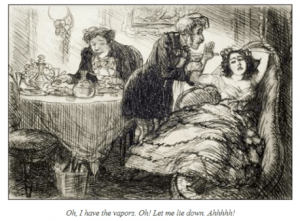
The Purpose(s)
There are 2 theories as to the purpose of the fainting couch. The most popular: women were actually fainting because their corsets were too tight, restricting blood flow. However, pictures from the 1860s show women horseback riding, playing tennis, and engaging in other vigorous activities in corsets, without hindrance.
The other, perhaps more interesting theory, relates to the treatment of female hysteria. Access to both sides of the couch facilitated manual pelvic massage by home visiting doctors and midwives. As a “disease” that needed recurring in-home treatment which could often take hours, creating specialized furniture for maximum comfort seems likely. Hmmm.
Privacy
As a piece of furniture for the wealthy, the fainting couch would have been made of expensive wood – walnut or rosewood – with a stuffed, upholstered body. Most often, the fainting couch would be in the bedchamber. Fainting rooms became popular for additional privacy. This doesn’t explain the occasional fainting room with multiple couches.
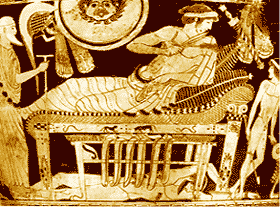
Victorian Ladies
Since the Victorians were fond of revisiting historical styles — think Greek, Egyptian and Gothic Revivals — the adaptation of those early chaise-looking pieces of furniture to the current use fits right in. While the Victorians coined the term “fainting couches,” they were not the first era in England to make use of it. There are many examples of antique couches and daybeds―most upholstered or caned―from the 1600s forward, proving that this item of furniture was not a Victorian invention.
Dollhouse / Miniatures
Akameru Kawaii has an excellent tutorial on making a fainting couch from polymer clay, the result shown in the top photo. Click here for links to Google Images of dollhouse fainting couches in websites and blogs.
Susan Downing, with Patrick Owens


